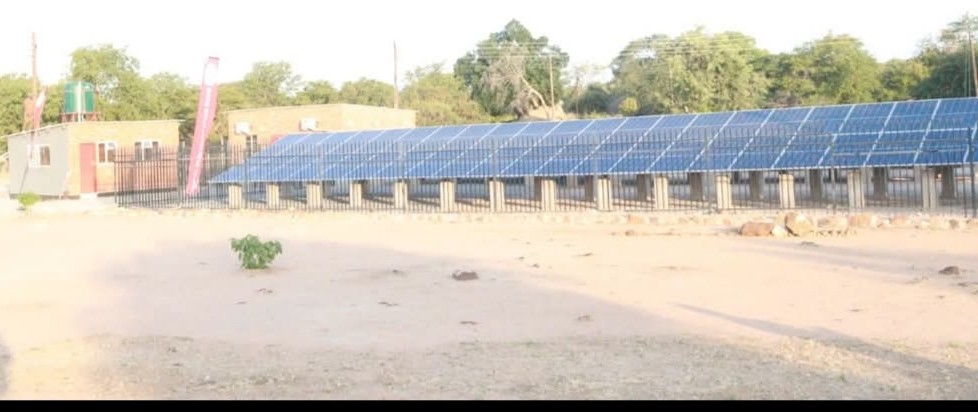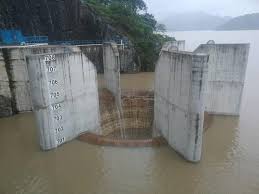Trymore Tagwirei.
Zimbabwe is on the brink of a clean energy transformation, with the government accelerating efforts to unlock the country’s vast renewable energy potential.
As part of its vision to become an upper-middle-income economy by 2030, Zimbabwe has committed to slashing greenhouse gas emissions by 33 percent—with renewable energy playing a central role in that transition.
At the heart of this vision is the draft Renewable Energy Policy, which sets an ambitious target of generating 1 000 megawatts (MW) of renewable energy by 2025. This target opens up substantial opportunities for investment, particularly in a country where only 40 percent of the population has access to electricity, and rural electrification lags at just 19 percent.
According to census data, nearly 70 percent of Zimbabweans live in rural areas, where firewood remains the primary energy source. Meanwhile, the country’s total installed electricity generation capacity stands at 2 342 MW, drawn from thermal (55 percent) and hydroelectric (45 percent) sources. However, frequent water shortages, fuel constraints, and aging infrastructure have prevented full utilization of this capacity.
With current daily electricity demand at 1,471 MW, Zimbabwe relies heavily on imports from South Africa, Zambia, and Mozambique, which, while mitigating blackouts, continue to strain scarce foreign currency reserves.
Independent power producers: big potential, limited output.
Power generation in Zimbabwe remains dominated by Kariba Hydro and Hwange Thermal Power Stations. Independent Power Producers (IPPs), despite their potential, contribute just 12 MW to the national grid.
Isaiah Nyakusendwa, chairperson of the Renewable Energy Association of Zimbabwe (REAZ) said licensed IPPs currently hold 131 MW of installed capacity, with 74 percent from three bagasse plants, 24 percent from eight mini-hydro projects, and a mere 2 percent from a single solar PV installation. Biomass energy adds only 0.5 MW.
Many IPPs are yet to break ground. However, if fully implemented, licensed projects could inject an additional 711 MW into the grid—661 MW from 17 solar projects and 50 MW from nine mini-hydro initiatives.
“Zimbabwe also has 433 small mini-grids—each under 100 kilowatts—generating a combined 733 kilowatts under light regulation,” Nyakusendwa said.
He added that rooftop solar installations remain limited but are gaining traction through planned projects. Among the country’s most significant renewable initiatives is the Batoka Gorge Hydro Project—a 2,400 MW bilateral project with Zambia, with output split equally between the two nations.
The rural gap and the promise of off-grid solutions.
Expanding electricity access in rural areas is a pressing challenge. The Rural Electrification Authority (REA) is leading this effort, but progress is slow due to limited funding and the high cost of grid extension to sparsely populated regions.
This gap highlights the urgency of off-grid renewable energy solutions, including solar, wind, mini-hydro, biomass, and bagasse. Zimbabwe is ideally positioned to harness solar power, enjoying over 3,000 hours of sunshine annually and an average solar irradiation of 20 megajoules per square metre per day.
With mobile phone penetration above 80 percent and a robust mobile money system, Zimbabwe is well-placed to scale Pay-As-You-Go (PAYGO) solar technologies, offering affordable electricity to off-grid households.
Nyakusendwa also cited the national solar water heating programme as another high-impact initiative. Retrofitting electric geysers with solar units could free up as much as 300 MW of grid power.
In agriculture—which supports the majority of Zimbabweans—solar-powered irrigation systems could be a game-changer, helping to cushion farmers from climate shocks and reduce carbon emissions.
Unlocking funding for a renewable future.
Despite the potential, many renewable energy projects remain stalled due to lack of funding, limited access to affordable long-term credit, and inadequate technical capacity to develop bankable project proposals.
To overcome these barriers, the African Enterprise Challenge Fund (AECF) has launched the US$6.5 million Renewable Energy and Adaptation to Climate Technologies (REACT SSA) programme. The initiative aims to stimulate private sector participation in clean energy and strengthen Zimbabwe’s climate resilience and energy independence.
With the right mix of policy, investment, and innovation, Zimbabwe’s transition to renewable energy could power not only its economy but also a more inclusive, sustainable future for all its citizens.








